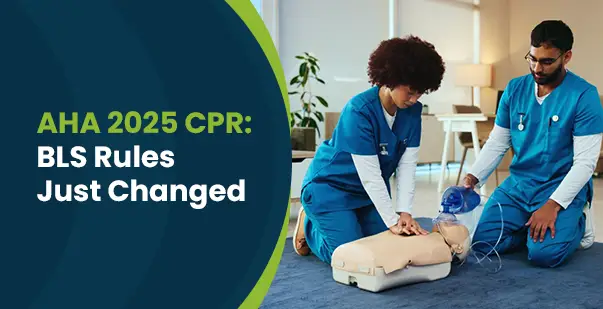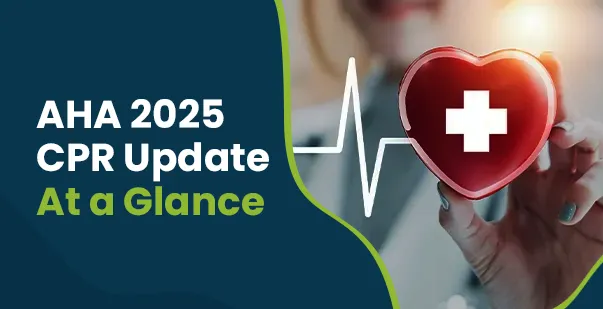Each year in the US, electrical accidents result in approximately 400 deaths and thousands of injuries, according to the National Safety Council. A shock from a simple phone charger typically delivers a harmless low current, as they are designed to operate at safe levels, usually around 5 volts. However, risks can arise if the charger is defective or used in hazardous conditions, such as exposure to water. Under these circumstances, even low-voltage devices can pose a danger. Everyday items like toasters, hair dryers, or damaged power cords can also deliver painful shocks. Outdoor dangers include fallen power lines after storms or contact with electric fences. The good news is that 90% of electrical accident victims can survive if they get help within the first minute. So, scroll down to learn basic first aid for an electrocution victim. These skills could help you save a friend or family member’s life one day.
What is Electrocution?
Electrocution occurs when an electric current passes through a person’s body, causing injuries that range from mild discomfort to severe damage. When electricity enters the body, it disrupts the normal electrical signals controlling muscles and organs. This disruption can lead to burns, nerve damage, or even cardiac arrest, where the heart’s function becomes impaired.
The severity of electrocution injuries depends on factors like voltage level, current strength, the path of current, duration of contact, and body resistance. For context, common sources of voltage include car batteries (around 12 volts), household outlets (120-240 volts), and industrial equipment, which can exceed thousands of volts. Now the question arises, how many volts is lethal? While currents as low as 50 volts can be dangerous, risks increase significantly in the presence of moisture, prolonged exposure, or pre-existing health conditions.
Voltages above 500 volts are generally associated with severe injuries or fatalities. However, even lower voltages can be fatal under certain conditions, such as when the current flows through critical areas of the body or if the environment increases conductivity, like standing in water. Higher-voltage sources, such as power lines, pose a more immediate danger, but the duration of contact determines the severity of injury. Even a few seconds of exposure can cause lasting harm.
What are the Potential Electrocution Hazards?
Electricity tends to follow the shortest path to the ground. If this path passes through vital organs like the heart, lungs, or brain, it can become life-threatening. For example, a current traveling from the hand to the foot may affect the heart and cause cardiac arrest. So, what are all the main causes of electrocution? Let’s find out:
- Household Electrical Contact
Common household items operating at 120-240 volts pose serious risks. Faulty wiring, damaged cords, or wet appliances can send electricity through your body. The current disrupts nerve signals and can cause muscle spasms, burns, and cardiac problems.
- Industrial Equipment Exposure
Heavy machinery and industrial systems often use voltages above 480V. Workers face risks from exposed wires, malfunctioning equipment, or improper lockout procedures. These high-voltage accidents frequently cause deep tissue burns and organ damage.
- Lightning Strikes
A direct lightning strike delivers up to 300 million volts and 30,000 amps. Even indirect strikes, such as those occurring nearby, can induce lethal currents in the human body. These indirect pathways can generate dangerously high voltages. The extreme current can cause immediate cardiac arrest, severe burns, neurological damage and even death.
- Power Line Accidents
Overhead power lines carry 7,200 to 750,000 volts. Contact through ladders, tools, or tree branches creates a deadly path for electricity. The high voltage can cause massive internal burns and often leads to fatal injuries.
- Water-Related Electrical Accidents
Pure water is a poor conductor of electricity. However, impurities like salts and minerals significantly increase the conductivity. Thus, submerged electrical items or electronics used near pools or bathtubs create serious shock hazards. Even low-voltage devices can become deadly when exposed to water.
Read More: First Aid for Arc Flash: What Triggers It & Ways To Prevent It
What Are The Main Consequences of Electrocution?
Electrical shocks can lead to serious and life-threatening consequences, including severe burns, nerve damage, muscle injuries, and cardiac arrest. The effects depend on factors like voltage, current path, and exposure duration. Some of the main risks and consequences of electrocution are discussed as follows:
Burns
High-voltage shocks can cause severe burns both on the skin’s surface and internally. Burns from electric shock often occur when the current enters and exits the body, usually creating distinct marks. Exit wounds are often larger and more severe than entry wounds due to the current’s dispersion. However, electric burns can be deeper and more serious than they appear, as the current can damage tissues below the skin. Moreover, internal burns can affect muscles and organs and may require immediate medical treatment. Treating these burns properly is critical because they can cause infection and further damage if left untreated.
Heart Issues
Electrical currents can interfere with the heart’s natural electrical rhythm. When the heart’s activity is disrupted, it can cause arrhythmias, where the heartbeat becomes irregular, or even lead to cardiac arrest. Immediate defibrillation is required in these cases because it helps restore the heart’s normal rhythm, significantly improving survival rates. Without defibrillation, prolonged oxygen deprivation to the brain and other organs can result in permanent damage or death.
Nerve and Muscle Damage
Electric shock can also cause significant damage to nerves and muscles. The electrical current can interfere with nerve signals, resulting in numbness, tingling, or weakness in various parts of the body. In some cases, a powerful shock can lead to partial or full paralysis, where the victim loses control over certain muscles.
Examples of long-term consequences include chronic pain due to nerve damage and mobility issues caused by weakened or permanently damaged muscles. Victims may face difficulty performing daily activities or require ongoing therapy for rehabilitation. These effects emphasize the importance of medical care to assess and treat any lasting nerve or muscle injuries.
Respiratory Problems
Electric shocks can affect the muscles responsible for breathing, especially if they impact the chest area. In these cases, breathing may become shallow, difficult, or even stop altogether. When breathing is affected, it’s essential to act quickly to provide support until emergency help arrives. Breathing issues due to electric shock can be life-threatening, especially if the brain and other organs are deprived of oxygen.
Step-by-Step First Aid for Electrocution Victims
If you ever witness someone get electrocuted, all you would require are basic steps to save a life. Electrical injuries are dangerous and need quick, careful action. Here are step-by-step instructions to provide basic first aid for the victim:
- Ensure Your Own Safety
Your safety comes first when assisting someone who has been electrocuted. An active electrical current could still be present, putting you at risk. Immediately turn off the power source if possible, by flipping a breaker, switching off a power switch, or unplugging the appliance. This action halts the flow of electricity, making it safe to approach the victim.
If the power cannot be switched off, use a non-conductive object, such as a wooden broom handle, plastic rod, or dry cloth, to separate the victim from the current. Avoid using metal objects or anything wet, as these conduct electricity. Always ensure the ground is dry and avoid standing in water, as wet surfaces can transmit electricity, further endangering you and the victim.
Whenever possible, use tools specifically rated for electrical safety, such as insulated gloves or poles, to minimize the risk of shock. Never touch the person while they are in contact with the current, as this could result in you being electrocuted as well. Ensuring your safety allows you to provide effective help and avoid creating a secondary emergency.
- Check for Responsiveness
Once it’s safe to approach the victim, the next step is to see if they are responsive. This will help you understand how serious their condition is. Stand close and ask loudly, “Can you hear me?” or “Are you okay?” This lets you see if they can respond or make any sounds. If there’s no response to your voice, carefully shake their shoulder to see if they react. Make sure you are cautious, especially if they’ve fallen, as they might have other injuries. You also need to avoid moving the victim unnecessarily, as they may have spinal injuries.
If the person doesn’t respond to either your voice or gentle shaking, this is a serious sign. They might have lost consciousness, which often means immediate medical help is required. Continue to the next steps quickly.
- Call for Emergency Help
Dial emergency services (like 911) as soon as you can. Tell them it’s an electrical injury so they understand the urgency. Medical professionals are trained to handle electrical shocks and will arrive with equipment to provide further treatment.
- Check Breathing and Pulse
Once you’ve called for help, begin assessing the victim’s vital signs. This means checking if they’re breathing and if they have a pulse, as these are crucial indicators of their condition. Watch closely to see if the victim’s chest rises and falls, which indicates breathing. You can also place your ear near their mouth to feel or hear breaths. If they aren’t breathing, they need immediate CPR.
Check for a pulse either at their neck (carotid artery) or wrist. If you’re unsure how to find the pulse, gently feel with two fingers to see if you can detect a heartbeat. If you cannot find a pulse, this is a sign that their heart may have stopped, and CPR is needed. If they’re unresponsive, not breathing, or don’t have a pulse, move on to CPR immediately.
- Perform CPR if Necessary
CPR (Cardiopulmonary Resuscitation) helps maintain blood flow and oxygen to the brain when the heart has stopped or the person isn’t breathing. Here’s how to perform CPR:
- Position Yourself Properly: Kneel beside the victim and place the heel of one hand on the center of the chest, just below the nipple line. Place your other hand on top and interlock your fingers.
- Begin Chest Compressions: Push hard and fast, aiming to press about 2 inches deep with each compression. Maintain a steady rhythm of 100-120 compressions per minute, which is roughly two compressions per second. Allow the chest to rise fully between each compression.
- Rescue Breaths (Optional): If you’re trained in CPR, you can give rescue breaths. After 30 compressions, tilt the victim’s head back, pinch their nose, and breathe into their mouth twice, watching for the chest to rise. Continue with 30 compressions followed by 2 breaths until medical help arrives or the victim starts breathing again.
- Use an AED if Available: If an Automated External Defibrillator (AED) is nearby, retrieve it quickly. Turn it on and follow the device’s instructions to deliver a shock if needed. AEDs are designed to restore the heart’s rhythm and can significantly improve the victim’s chances of survival, especially in cases of cardiac arrest caused by electrocution.
- Treat Burns
Electric shocks often cause burns at the points where the current enters and exits the body, which can be serious and require special care. The first step is to cool the burn. To do so, hold the affected area under cool (not cold) running water for several minutes to reduce pain and swelling. Avoid using ice, as it can constrict blood vessels, restrict blood flow to the tissue, and worsen the damage by delaying the healing process.
While you may be tempted to apply lotion like petroleum jelly or heavy cream, this can trap heat in the burn and cause further injury. Gently cover the burn with a sterile or clean cloth. Avoid using fluffy or loose fabrics, as they might stick to the burn and cause additional pain when removed.
Read More: The importance of first aid and CPR training
Be Prepared to Act in Electrocution Emergencies!
Quick action during electrocution emergencies can be life-saving. As the use of electrical devices continues to grow, electrical hazards remain a significant concern. Students, workers, and families must learn proper safety steps. Your knowledge of rescue methods can protect you and others from electrical accidents at home, school, or work.
Modern buildings need better safety features like advanced circuit breakers and emergency shut-off systems. The future will bring new electrical safety tools and equipment. Thus, everyone should take first aid classes to stay ready for emergencies. A prepared person can become a hero when electrical disasters strike. Your awareness today creates a safer tomorrow for all.
Frequently Asked Questions (FAQs)
- What is the first action to be taken when a person is being electrocuted?
First, cut off the power source by unplugging or switching off the main supply. Never touch the victim directly. Use a dry, non-conductive object like a wooden broom or rubber mat to separate them from the electrical source. This prevents you from becoming a second victim.
- How to give first aid to an electrocuted person?
Check for breathing and pulse. Start CPR if needed. Look for entry and exit burn marks. Cool any burns with clean, room-temperature water. Keep the victim still, as electrical injuries can cause internal damage. Call emergency services immediately and monitor vital signs until help arrives.
- What first aid can be given immediately to the shocked victim?
After ensuring safety, check consciousness by speaking loudly. Cover burns with sterile gauze. Place the victim in a recovery position if breathing but unconscious. Do not give food or water. Keep them warm and calm to prevent shock symptoms.
- How to help someone who is being electrocuted?
Stay calm and alert others nearby. Block access to the danger area. If power cannot be cut, use a Class C fire extinguisher to break electrical contact. Once separated from the current, assess vital signs. Document incident details for medical responders.









